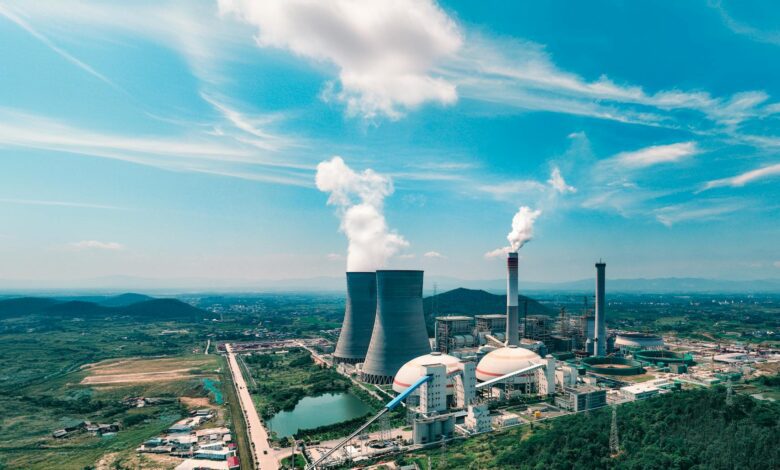The Hidden Dangers of Thermal Pollution

Understanding the Causes
This type of pollution can be attributed to several key sources:
- Power Plant Discharges: Electricity-generating power plants, particularly those that rely on fossil fuels or nuclear energy, often use large volumes of water for cooling purposes. The heated water discharged from these plants can significantly raise the temperature of nearby water bodies.
- Industrial Processes: Various industrial activities, such as manufacturing, mining, and chemical processing, often generate significant amounts of waste heat that are released into nearby water sources.
- Urban Runoff: Paved surfaces, rooftops, and other impervious surfaces in urban areas absorb and retain heat, which can then be flushed into local waterways through stormwater runoff.
- Climate Change: The ongoing global warming phenomenon is exacerbating the problem of thermal pollution, as rising air and water temperatures contribute to the overall warming of aquatic ecosystems.
The Impact of Thermal Pollution on Aquatic Ecosystems
Thermal pollution can have far-reaching and devastating consequences on the delicate balance of aquatic ecosystems. The introduction of excess heat can disrupt the natural temperature regimes that many aquatic organisms have evolved to thrive in, leading to a cascade of negative effects.
Effects of Thermal Pollution on Marine Life
In marine environments, thermal pollution can cause significant harm to a wide range of organisms, from microscopic plankton to large, charismatic species. Elevated water temperatures can disrupt the breeding and spawning patterns of fish, leading to decreased reproductive success and population declines. Additionally, thermal stress can make marine life more susceptible to disease, parasites, and other environmental stressors, further compromising the health of these ecosystems.
Thermal Pollution and Its Impact on Freshwater Ecosystems
Freshwater ecosystems, such as rivers, lakes, and streams, are equally vulnerable to the detrimental effects of thermal pollution. Increased water temperatures can alter the dissolved oxygen levels, which are crucial for the survival of aquatic plants, fish, and other organisms. This, in turn, can lead to the disruption of food webs, the displacement of sensitive species, and the proliferation of invasive or opportunistic species that thrive in warmer waters.
Case Studies: Famous Incidents of Thermal Pollution

Throughout history, there have been several high-profile incidents of thermal pollution that have drawn attention to this environmental issue. One notable example is the case of the Monongahela River in Pennsylvania, where the discharge of heated water from power plants and industrial facilities led to significant declines in fish populations and the disruption of the river’s delicate ecosystem. Another well-known case is the thermal pollution of the Chesapeake Bay, where the cumulative impact of multiple sources of heated effluent has contributed to the degradation of this vital coastal ecosystem.
Measures to Prevent and Control Thermal Pollution
Addressing the problem of thermal pollution requires a multi-faceted approach that involves both regulatory measures and technological solutions. Some of the key strategies for preventing and controlling thermal pollution include:
- Stricter regulations and enforcement: Governments and environmental agencies must enact and enforce strict regulations on the discharge of heated effluent into water bodies, ensuring that the temperature of these discharges does not exceed the limits necessary to protect aquatic life.
- Improved cooling technologies: Power plants and industrial facilities can adopt more efficient cooling systems, such as closed-loop cooling systems or the use of alternative cooling methods, to minimize the amount of waste heat released into the environment.
- Promoting sustainable urban development: Urban planners and policymakers can implement measures to reduce the impact of urban runoff, such as the use of permeable surfaces, green infrastructure, and stormwater management systems.
- Investing in research and innovation: Continued research and development of new technologies and strategies for mitigating this type of pollution can help address this environmental challenge.
The Role of Government and Environmental Organizations in Tackling Thermal Pollution
Addressing the issue of thermal pollution requires a collaborative effort between government agencies, environmental organizations, and the private sector. Governments play a crucial role in establishing and enforcing regulations, providing funding for research and development, and incentivizing the adoption of sustainable practices. Environmental organizations, on the other hand, can raise awareness, advocate for policy changes, and work with communities to implement local solutions.
The Future: Predictions and Concerns
As the world continues to grapple with the challenges of climate change and the increasing demand for energy, the problem of thermal pollution is likely to become more pronounced in the years to come. Experts predict that the frequency and intensity of thermal pollution events will continue to rise, further exacerbating the strain on our aquatic ecosystems. However, with increased awareness, innovative solutions, and a collective commitment to environmental stewardship, there is hope that we can mitigate the hidden dangers of this type of pollution and protect the health of our precious waterways.
Conclusion: The Importance of Addressing This Type of Pollution for the Health of Our Ecosystems
This type of pollution is a complex and often overlooked environmental challenge that poses a significant threat to the delicate balance of our aquatic ecosystems. By understanding the causes, impacts, and potential solutions to this problem, we can take proactive steps to safeguard the health of our waterways and the diverse array of life they support. As we move forward, it is crucial that we prioritize the prevention and control of thermal pollution, working together as individuals, communities, and global citizens to ensure a sustainable future for our planet.
To learn more about the latest developments in thermal pollution research and mitigation efforts, subscribe to our newsletter or visit our website for additional resources and information. Together, we can make a difference in protecting our precious aquatic ecosystems.




